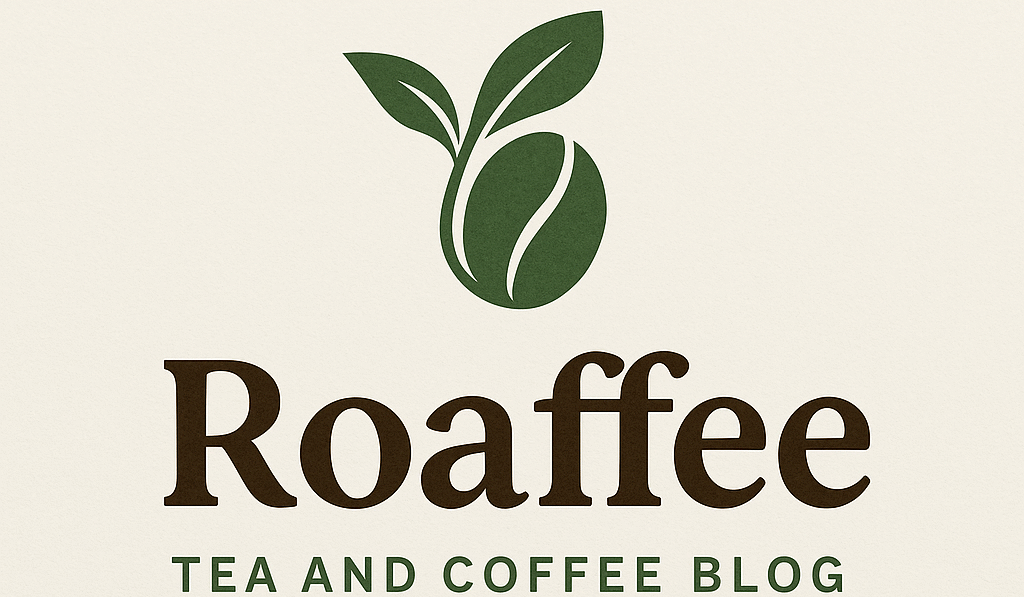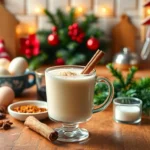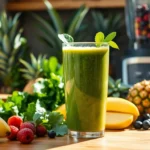We’ve all been there – standing in our kitchen wondering how to add that perfect touch of sweetness to our favorite drinks and desserts. Honey syrup is the game-changing ingredient that’ll transform your culinary creations from ordinary to extraordinary.
This liquid gold combines the natural sweetness of honey with the smooth consistency of simple syrup, making it incredibly versatile for everything from cocktails to pancakes. Unlike regular honey that can be stubborn to mix, honey syrup dissolves effortlessly into cold beverages and blends seamlessly into batters and dressings.
What makes honey syrup truly special is its ability to enhance flavors without overpowering them. We’re talking about a pantry staple that’ll elevate your morning coffee, add depth to your homemade vinaigrettes, and become your secret weapon for impressive cocktails. The best part? You can whip up a batch in just minutes with ingredients you probably already have on hand.
What Is Honey Syrup
Honey syrup is a liquid sweetener created by diluting pure honey with water to achieve a thinner consistency than natural honey. We combine equal parts honey and water to create this versatile ingredient that dissolves effortlessly in both hot and cold beverages.
The syrup maintains all the complex flavors and beneficial properties of raw honey while offering superior mixability. Natural honey’s thick viscosity can make it challenging to incorporate into drinks and recipes, but honey syrup eliminates this obstacle entirely.
| Component | Ratio | Purpose |
|---|---|---|
| Honey | 1 part | Provides sweetness and flavor |
| Water | 1 part | Creates smooth consistency |
We appreciate honey syrup for its ability to blend seamlessly into cocktails without creating sticky textures or uneven sweetness distribution. Bartenders and home mixologists favor this preparation because it integrates instantly with spirits and mixers.
The dilution process doesn’t compromise the honey’s distinctive floral notes or natural complexity. Instead, it creates a medium that allows these flavors to disperse more evenly throughout your beverages and dishes.
Restaurant kitchens rely on honey syrup as a time saving ingredient that delivers consistent results. The liquid form eliminates the need to warm honey or spend extra time ensuring complete dissolution in recipes.
We find that honey syrup bridges the gap between the convenience of simple syrup and the rich flavor profile that only honey can provide. This combination makes it an essential ingredient for anyone looking to elevate their culinary creations with natural sweetness.
Ingredients

Creating the perfect honey syrup requires just two essential components that you likely already have in your kitchen. We recommend starting with high-quality honey as your primary ingredient since this forms the foundation of your syrup’s flavor profile.
For Basic Honey Syrup:
- Honey – 1/2 cup to 1 cup (depending on your desired batch size and sweetness level)
- Water – Equal amount to honey for standard consistency, or half the amount for thicker syrup
Ratio Options:
| Ratio | Honey Amount | Water Amount | Consistency |
|---|---|---|---|
| 1:1 | 1 cup | 1 cup | Standard thickness |
| 2:1 | 1 cup | 1/2 cup | Thicker syrup |
Optional Flavor Enhancers:
- Fresh herbs – rosemary, thyme, or mint sprigs
- Whole spices – cinnamon sticks, cardamom pods, or star anise
- Citrus peels – lemon, orange, or grapefruit zest
- Flower petals – lavender or rose petals for floral notes
We suggest using raw honey when possible to preserve beneficial enzymes and complex flavors. Liquid honey works best for the cold preparation method while crystallized or thick honey requires gentle heating. The water quality matters too since it affects the final taste, so we recommend using filtered water for the cleanest flavor profile.
Equipment Needed

Making honey syrup requires minimal equipment that most home cooks already have in their kitchens. We recommend gathering these essential tools before starting your syrup preparation.
Medium Saucepan serves as our primary mixing vessel when using the heated method. The saucepan allows us to gently warm the honey and water mixture for complete dissolution. Choose a heavy-bottomed pan to prevent scorching during the heating process.
Long-Handled Stirring Spoon helps us thoroughly combine the honey and water without creating air bubbles. We prefer wooden or silicone spoons that won’t scratch our cookware. The extended handle keeps our hands away from any heat while stirring.
Measuring Cups ensure we achieve the perfect honey-to-water ratios discussed earlier. Accurate measurements create consistent results every time we make our syrup. Use separate cups for wet ingredients to avoid sticky cleanup challenges.
Fine-Mesh Strainer removes any impurities or undissolved particles from our finished syrup. This tool becomes especially important when using raw honey that may contain small wax particles. Straining creates a smooth and professional-quality syrup.
Glass Airtight Container provides optimal storage for our finished honey syrup. Glass containers don’t absorb flavors and allow us to see the syrup’s clarity and color. The airtight seal preserves freshness and prevents contamination during storage.
Squeeze Bottle or Syrup Dispenser offers convenient dispensing for cocktails and culinary applications. These containers make portion control effortless and reduce waste during use. We find squeeze bottles particularly useful for precise cocktail measurements.
Kitchen Thermometer helps us monitor temperature when using the heated method. Keeping temperatures below 180°F preserves honey’s beneficial properties and prevents caramelization. This tool ensures we maintain optimal heat levels throughout the process.
Instructions

Making honey syrup is a straightforward process that takes just minutes to complete. We’ll walk you through each step to ensure perfect results every time.
Prep
We begin by gathering our honey and water in the desired ratio. For standard consistency we combine equal parts honey and water while thicker syrup requires 2 parts honey to 1 part water. Measure ingredients accurately using proper measuring cups to maintain consistency across batches.
If using crystallized honey we recommend warming it slightly to restore its liquid state. This makes blending much easier and prevents lumps in the final product. For infused variations we add herbs, spices, or citrus peels to the water before combining with honey.
Cook
We have two effective methods for creating smooth honey syrup. The cold method involves combining honey with hot water in a container with a tight-fitting lid then shaking vigorously until completely dissolved. This preserves the honey’s delicate flavors and enzymes.
For thicker honey or larger batches we use the gentle heating method. Place honey and water in a medium saucepan over low heat stirring continuously until the honey dissolves completely. We avoid boiling the mixture as high temperatures can alter the honey’s natural properties and flavor profile. The syrup is ready when no honey streaks remain visible.
Cool and Store
Allow the finished syrup to cool completely at room temperature before transferring to storage containers. We strain the mixture through a fine-mesh strainer to remove any impurities or undissolved particles that might affect texture.
Store the cooled honey syrup in an airtight glass container in the refrigerator where it maintains quality for up to one month. We recommend using a squeeze bottle for easy dispensing in cocktails and recipes. Label containers with preparation dates to track freshness and ensure optimal flavor in your culinary creations.
Recipe Variations

Our honey syrup recipe transforms into countless delicious variations with simple adjustments to ratios and flavor additions. These customizations allow us to create specialized syrups perfect for exact drinks and culinary applications.
Flavored Honey Syrups
Infused Honey Simple Syrups offer endless possibilities for customization. We create these aromatic versions by adding ingredients like vanilla beans, cinnamon sticks, or dried lavender to boiling water before combining with honey. The mixture simmers for a few minutes, then we allow it to infuse for a couple of weeks to achieve maximum flavor intensity.
Hot Honey Syrup brings exciting heat to our repertoire. We combine honey with fresh peppers like Fresno or jalapeño for a spicy kick that develops over time. For instant gratification, we can mix honey syrup with hot sauce to create an immediately available spicy version.
Lemon Honey Syrup brightens our creations with citrus notes. We incorporate fresh lemon juice and zest during preparation, creating a tangy sweetener perfect for teas and summer cocktails.
Herbal Syrups introduce sophisticated flavors through herbs like rosemary. We add fresh herb sprigs during the heating process, allowing their essential oils to infuse throughout the syrup for unique flavor profiles.
Honey Simple Syrup Ratios
Our basic ratio follows the traditional 1:1 proportion of honey to water, creating a standard consistency perfect for most applications. This balanced mixture dissolves easily while maintaining honey’s distinctive flavor profile.
For thicker applications, we adjust to a 3:1 honey to water ratio. This concentrated version works exceptionally well for drizzling over desserts or creating more intense sweetness in beverages.
An alternative ratio of 1.5 cups honey to 0.5 cups water provides moderate thickness between our standard and concentrated versions. We adjust this proportion based on our desired consistency and intended use.
| Ratio Type | Honey | Water | Best Uses |
|---|---|---|---|
| Basic | 1 cup | 1 cup | Cocktails, coffee, tea |
| Thick | 3 cups | 1 cup | Dessert drizzle, glazes |
| Alternative | 1.5 cups | 0.5 cups | Baking, vinaigrettes |
How to Use Honey Syrup

Now that we’ve mastered making honey syrup let’s explore the countless ways this versatile sweetener enhances our culinary creations. From cocktails to baked goods honey syrup transforms ordinary recipes into extraordinary experiences.
In Cocktails
Honey syrup serves as our secret weapon for creating balanced and flavorful cocktails. We can easily incorporate this smooth sweetener into classic drinks like the Penicillin and Bee’s Knees where its complex flavor profile adds depth without overwhelming other ingredients. The syrup dissolves effortlessly in both hot and cold beverages eliminating the sticky texture that pure honey often creates.
Bartenders and home mixologists prefer honey syrup because it blends seamlessly with spirits and mixers. We recommend using it in whiskey cocktails where the honey’s natural complexity complements aged spirits beautifully. The syrup also works wonderfully in gin based drinks adding floral notes that enhance botanical flavors.
When crafting cocktails we typically use one part honey syrup to replace one part simple syrup in any recipe. This substitution maintains the drink’s balance while introducing honey’s distinctive taste and beneficial properties.
In Baking
We substitute honey syrup for refined sugars in our baking recipes to achieve moist textures and rich flavors. The syrup works particularly well in muffins quick breads and cakes where its liquid consistency helps create tender crumbs. Unlike granulated sugar honey syrup adds moisture to our baked goods while providing natural sweetness.
For optimal results we reduce other liquids in our recipes by approximately 1/4 cup for every cup of honey syrup used. The syrup caramelizes beautifully during baking creating golden brown crusts and enhanced flavors. We find it especially effective in whole grain baked goods where honey’s complexity balances earthier flour flavors.
Honey syrup also excels in glazes and frostings where its smooth consistency eliminates grittiness. We brush it over fresh baked breads and pastries while they’re still warm allowing the syrup to penetrate and add sweetness throughout.
As a Sweetener
We use honey syrup as our go to natural sweetener for beverages desserts and dressings. Its smooth consistency makes it perfect for stirring into hot coffee or tea without creating the crystallization that sometimes occurs with pure honey. The syrup dissolves instantly in cold beverages like iced tea and lemonades.
In salad dressings and vinaigrettes honey syrup provides balanced sweetness that complements acidic ingredients. We whisk it directly into our dressings without worrying about uneven distribution or separation. The syrup’s liquid form ensures consistent flavor throughout every bite.
For dessert applications we drizzle honey syrup over fresh fruit yogurt and ice cream. Its antioxidant properties and anti inflammatory benefits make it a healthier alternative to processed sweeteners while delivering superior flavor. We store our honey syrup in squeeze bottles for easy dispensing and portion control.
Storage Instructions

Proper storage keeps our homemade honey syrup fresh and flavorful for extended periods. We can store honey syrup at room temperature in an airtight container for up to one week thanks to its natural antibacterial properties that help prevent spoilage.
Refrigeration provides the best option for longer storage and helps maintain optimal freshness. We recommend transferring the cooled syrup to glass mason jars or squeeze bottles for convenient storage and dispensing. Glass containers work exceptionally well because they don’t absorb flavors or odors that might affect our syrup’s taste.
Storage containers should seal tightly to prevent moisture absorption and contamination. We find that plastic airtight containers also work effectively though glass remains our preferred choice for maintaining quality.
Storage Duration by Method:
| Storage Method | Duration | Container Type |
|---|---|---|
| Room Temperature | Up to 1 week | Airtight glass or plastic |
| Refrigerated | Up to 1 month | Glass mason jars or squeeze bottles |
Crystallization may occur naturally over time but doesn’t indicate spoilage. We can easily restore liquid consistency by placing the container in a bowl of warm water and gently stirring until the crystals dissolve. Avoid using microwaves as high heat can damage honey’s beneficial properties and alter its flavor profile.
Label containers with preparation dates to track freshness effectively. We suggest using honey syrup within the recommended timeframe for the best taste and quality in our cocktails, baking projects, and other culinary creations.
Tips for Perfect Honey Syrup

We recommend controlling temperature carefully when working with raw honey to preserve its beneficial properties. Keep water below 110°F to maintain the natural antibacterial qualities and enzymes that make raw honey special. Higher temperatures can destroy these valuable compounds and reduce the nutritional benefits of your finished syrup.
Temperature and consistency adjustments become crucial for achieving the perfect texture. We suggest adjusting the honey to water ratio based on your intended use:
| Ratio | Consistency | Best For |
|---|---|---|
| 1:1 | Light syrup | Cocktails and beverages |
| 2:1 | Thick syrup | Drizzling and desserts |
| 3:1 | Very thick | Glazes and toppings |
Method selection depends on your honey’s current state. We find the cold method works exceptionally well with runny liquid honey. Simply place honey and hot water in a jar and shake vigorously until completely combined. This approach preserves delicate flavor notes that might be lost through heating.
Heat application becomes necessary when working with thick or crystallized honey. We combine honey and water in a saucepan over low heat and stir gently until the honey dissolves completely. This method ensures even distribution without scorching the honey or creating unwanted caramelization.
Flavor enhancement opportunities arise during the syrup making process. We add lemon juice and zest for bright citrus notes that complement honey’s natural sweetness. Fresh herbs like rosemary or thyme create sophisticated flavor profiles perfect for cocktails. Whole spices such as cinnamon sticks or star anise infuse warm aromatic qualities.
Storage optimization extends your honey syrup’s shelf life significantly. We store finished syrup in airtight glass containers to prevent contamination and flavor absorption. The natural antibacterial properties of honey allow the syrup to last for weeks or months when properly stored. Label containers with preparation dates to track freshness and ensure optimal flavor quality.
Quality honey selection makes a noticeable difference in the final product. We choose raw local honey when possible for maximum flavor complexity and health benefits. Clover honey provides mild sweetness perfect for general use. Manuka honey adds unique medicinal properties and distinctive taste notes that elevate specialty applications.
Troubleshooting Common Issues

Even experienced home cooks encounter challenges when making honey syrup. We’ve identified the most frequent problems and their answers to help you create perfect honey syrup every time.
Caramelization and Burnt Flavors
Excessive heat destroys honey’s delicate compounds and creates unwanted burnt flavors. We recommend heating your mixture gently over medium heat while stirring continuously to prevent boiling. Your syrup should never reach a rolling boil since this temperature damages honey’s beneficial enzymes and creates bitter notes.
Monitor your mixture closely during the heating process. If you notice any caramelization starting to occur, immediately remove the pan from heat and continue stirring until the temperature drops.
Sediment and Cloudiness Issues
Insoluble particles in honey often cause cloudy or sediment-filled syrup. We solve this problem by using a fine-mesh strainer to filter the cooled syrup before storage. Pour your finished syrup through the strainer slowly to catch any particles or impurities.
Some honey varieties naturally contain more particles than others. Raw honey particularly benefits from straining since it contains beneficial but sometimes visible elements like pollen particles.
Crystallization Problems
| Issue Type | Cause | Prevention Method |
|---|---|---|
| Cloudiness | Improper filtering | Strain through fine mesh |
| Rapid crystallization | Temperature shock | Cool gradually |
| Separation | Poor mixing | Stir thoroughly during preparation |
While honey syrup rarely crystallizes like traditional sugar syrups, clarity issues can develop without proper handling. We ensure smooth results by cooling the syrup slowly and storing it properly in the refrigerator to maintain clarity.
Allow your syrup to reach room temperature gradually before refrigerating. Sudden temperature changes can cause clarity problems that affect both appearance and texture.
Quality Control for Honey Selection
Adulterated honey affects your syrup’s final quality and flavor profile. We always use pure, unadulterated honey to ensure the best results. Commercial honey sometimes contains added sugar syrups that can interfere with your syrup’s consistency and taste.
Test your honey’s purity by checking its thickness and aroma before use. Pure honey should have a distinct floral scent and flow slowly from a spoon.
Ratio Adjustment Answers
Wrong honey-to-water ratios create consistency problems that affect your syrup’s performance in recipes. We use a standard 1:1 ratio for general purposes, but adjust to 2:1 for thicker applications when needed.
Measure your ingredients carefully using proper measuring tools rather than estimating. Accurate ratios ensure consistent results across different batches of syrup.
Storage-Related Issues
Improper storage leads to fermentation, separation, or off-flavors in your honey syrup. We store our syrup in clean, airtight glass containers in the refrigerator to prevent these problems.
Label your containers with preparation dates to track freshness effectively. Fresh honey syrup maintains its quality for up to one month when stored correctly.
Conclusion
Honey syrup transforms your culinary adventures by bridging the gap between convenience and natural flavor. We’ve shown you how this simple two-ingredient creation can revolutionize everything from your morning coffee to your weekend cocktails.
The versatility we’ve explored makes honey syrup an indispensable kitchen staple. Whether you’re crafting artisanal drinks or perfecting your baking recipes this golden sweetener delivers consistent results every time.
With proper storage techniques and our troubleshooting tips you’ll never face another sticky situation in the kitchen. The month-long refrigerator life means you can always have this liquid gold ready for your next culinary creation.
Start experimenting with different honey varieties and flavor infusions to discover your signature syrup blend. Your taste buds—and your guests—will thank you for making this simple yet groundbreaking switch.
Frequently Asked Questions
What is honey syrup and how is it different from regular honey?
Honey syrup is a mixture of honey and water that creates a thinner consistency than pure honey. It combines honey’s natural sweetness with the smooth mixability of simple syrup, making it easy to dissolve in both hot and cold beverages without the sticky texture or uneven sweetness that regular honey can create.
What’s the best ratio of honey to water for making honey syrup?
The most common ratio is 1:1 (honey to water) for general use. For a thicker consistency, use 2:1 or 3:1 ratios. The 1:1 ratio works well for cocktails and beverages, while thicker ratios are better for drizzling over desserts or using in baking applications.
How long does homemade honey syrup last?
Honey syrup can be stored at room temperature for up to one week in an airtight container, or refrigerated for up to one month. Store it in glass mason jars or squeeze bottles and label with the preparation date to track freshness effectively.
Can I make honey syrup without heating it?
Yes, you can make honey syrup using a cold method. Simply combine liquid honey with hot water in your desired ratio and shake or stir vigorously until fully dissolved. This method preserves honey’s delicate flavors and beneficial enzymes better than heating methods.
What are the best uses for honey syrup in cooking and drinks?
Honey syrup is perfect for cocktails, coffee, tea, and smoothies. In cooking, it works well in baking recipes, glazes, salad dressings, and marinades. It’s particularly popular among bartenders for drinks like the Penicillin and Bee’s Knees cocktails.
How do I prevent my honey syrup from crystallizing?
To prevent crystallization, avoid overheating during preparation (keep water below 110°F), ensure proper mixing, and store in airtight containers. If crystallization occurs, gently warm the container in a water bath rather than using a microwave to restore the smooth consistency.
Can I add flavors to my honey syrup?
Absolutely! You can infuse honey syrup with vanilla, cinnamon, lavender, fresh herbs, citrus peels, or even peppers for a spicy version. Add these ingredients during preparation and strain them out before storing for a clean, flavored syrup.
What type of honey works best for making honey syrup?
Raw, high-quality honey works best as it preserves beneficial enzymes and provides superior flavor. Liquid honey is ideal for cold preparation methods, while crystallized honey can be used but may require gentle warming to achieve the proper consistency.







